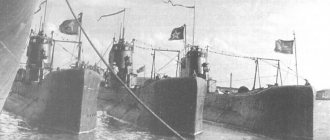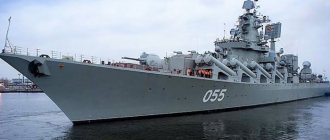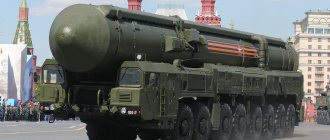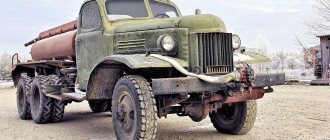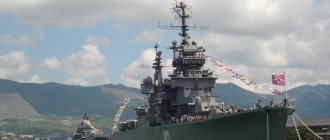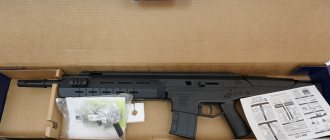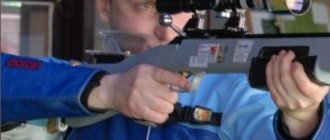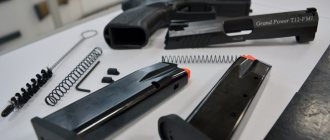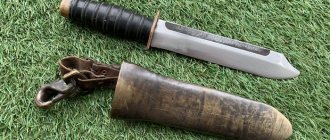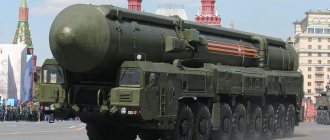The basis of Russia's strategic weapons is its nuclear submarine fleet. In addition to nuclear submarines with ballistic missiles, there are submarines in service whose purpose is to fight strategic submarines and enemy ships.
Large deep-sea cruisers move quietly under the sea water, which makes their service mysterious. Let's take a closer look at the Project 971 Shchuka-b submarines.
Active submarines
Currently, several Project 971 Shchuka-B nuclear submarines are included in the Russian Navy, among them:
- K-419 poster "Kuzbass". On February 20, 1989, she was officially included in the lists of Navy ships. On July 28, 1991, the laying of a large nuclear submarine took place at the shipbuilding plant named after. Lenin Komsomol in the city of Komsomolsk-on-Amur. On April 28, 1992, the boat was reclassified as a nuclear-powered cruising submarine. On April 30, 1992, she was removed from the boathouse to the launch dock. On May 18, 1992, the boat was launched and a mooring and government testing program began. On February 5, 1993, it became part of the 45th DiPL of the 2nd FPL of the Pacific Fleet.
- K-317 "Panther" poster. Serial number 822, the seventh ship of the project. Laid down on November 6, 1986, included on the list of ships of the USSR Navy on March 10, 1987, launched on May 21, 1990, commissioned on December 27, 1990. On January 28, 2008, after completion of repairs, she was accepted into service with the Navy. It became part of the 24th dpl of the 12th squadron of the Northern Fleet, based in Yagelnaya Bay, Saida Bay.
- K-157 poster "Vepr". Serial number 834. It differs from all previous submarines of the project with its modernized equipment and increased length by 3 meters. In the west, the Project 971U Vepr nuclear submarine and all the submarines that followed it are classified as the Akula II subclass. Laid down on June 16, 1990 at Sevmash in Severodvinsk. On January 27, 1992, she was officially included in the list of Navy ships. Launched on December 10, 1994. On December 29 of the same year, it was included in the 24th DiPL of the 3rd FPL of the Northern Fleet. On August 5, 2022, the submarine completed repairs and modernization for the Kalibr missile system at the Nerpa shipyard and returned to the Northern Fleet.
- K-335 poster "Cheetah". The nuclear submarine was laid down on September 23, 1991 at the shipbuilding plant in Severodvinsk under serial number 835. On February 22, 1993, it received the name “Gepard” and was included in the lists of Navy ships. In 1997, she inherited the guards flag from the K-22 submarine of project 675MKV. Launched on September 17, 1999. In January 2002, it became part of the 24th division of the 3rd submarine flotilla of the Northern Fleet.
Basic technical characteristics of submarines:
- Displacement (t): 12770.
- Length (m): 110.
- Width (m): 14.
- Draft (m): 9.7.
- Full speed (knots): 33.
- Autonomy (days): 90.
- Crew (persons): 112.
- Power plant: nuclear.
Nuclear submarine K-335 “Gepard” – video
Initially, the nuclear submarine Project 971 was considered as a “steel” analogue of the titanium nuclear submarine Project 945, intended to increase the pace of construction of third-generation submarines. However, the Malachite SPMBM, having extensive experience in designing multi-purpose boats, based on weapons, mechanisms and equipment created for Project 945, has essentially developed a new ship of the third generation. The quietest domestic nuclear submarines According to experts, the level of physical fields is comparable to such ships as the US Navy Seawolf nuclear submarine. The nuclear submarine pr. 971 is double-hulled and has a “limousine” fence for retractable devices, as well as a high stern tail, on which a fairing for the towed antenna of the sonar is located. The robust body is made of high-strength steel with a high yield strength (100 kgf/mm2) and is divided into six compartments by strong bulkheads.
All main equipment and combat posts of the Project 971 nuclear submarine are located on shock absorbers in zonal blocks, which are spatial frame structures with decks. Zone blocks are isolated from the boat hull by rubber-cord pneumatic shock absorbers. Thanks to the use of zonal blocks, it was possible to significantly reduce the level of the acoustic field, protect the crew and equipment from dynamic loads, and also rationalize the ship’s construction technology. In particular, the installation of equipment and systems was carried out in the workshop in a zone block, which was then inserted into the compartment shell. The lightweight body and the outer surface of the durable body are lined with a single rubber anti-hydrolocation and noise-absorbing coating. The ship has a traditional two-row TA arrangement. In the bow compartment there are racks for storing ammunition with longitudinal and transverse feed devices and UBZ. Under the TA there is a fence with the main antenna of the SAC. Some of the GAK and VSK antennas for the entire crew are located in the fencing of the wheelhouse and retractable devices.
The lightweight hull is shaped optimally for underwater travel. All holes and cutouts on it are covered with fairings. On the submarine pr. 97/ it was possible to implement comprehensive automation of combat and technical means, to concentrate control of the ship, its weapons and armament in the main command post. All this made it possible to reduce the crew to 73 people. Starting from K-263, on boats of Project 97/, SOKS is installed, and from K-391 - in the superstructure of the launcher for launching the hydroacoustic countermeasures complex, an emergency powder blowing system of the TsGB (powder generators) and emergency power networks. Simultaneously with the construction of ships of this type, a modernization program is being carried out, aimed at improving acoustic characteristics and expanding combat capabilities. In particular, the K-157 and K-335, while maintaining the same contours, have a mine insert of several meters for installing new equipment. Initially it was planned to build 20 submarines of Project 971. Head. No. 520 and head. No. 521, laid down in 1990 and 1991 respectively. at the Shipyard named after Lenin Komsomol, 03/18/1992 was excluded from the lists of the fleet. At this point, they had technical readiness of 25 and 12%, respectively. The backlog of equipment and mechanisms continues to be preserved at the construction plant.
As of December 2001, the fleet included 13 Project 971 submarines.
Nuclear submarine K-480 “Bars” (production number 821, from 07/24/1991, from 10/13/1997 “Ak-Bars” SMP (Severodvinsk): 02/22/1985; 04/16/1988 .; 12/31/1988. Was part of the Northern Fleet and carried out combat service in the Atlantic Ocean and the Mediterranean Sea. 04/06/1990, the boat made a deep-sea dive to the maximum depth. In 1998, she was expelled from the fleet's combat composition, transferred to ARVI for long-term storage and put into storage in the village of Gadzhievo.
Nuclear submarine K-317 “Panther” (serial number 822, from 10.10.1990). SMP (Severodvinsk): 06.11.1986; 05/21/1990; 12/30/1990 Part of the Northern Fleet. In September 1999, it was put into medium repair at SMP.
K-401 “Wolf” (serial number 831, from 07/26/1991). SMP (Severodvinsk): November 14, 1987; 06/11/1991; 12/29/1991 Part of the Northern Fleet. Completed two autonomous combat tours. From December 1995 to February 1996 in the Mediterranean Sea, the boat provided long-range anti-submarine cover for an aircraft carrier multi-purpose group led by TAVKR Admiral of the Fleet of the Soviet Union Kuznetsov
K-328 “Leopard” (serial number 832, from 01/24/1991). SMP (Severodvinsk): 10.26.1988; 06/28/1992; 12/15/1992 Part of the Northern Fleet Completed four autonomous combat services
K-154 “Tiger” (production number 833, from 07/24/1991). SMP (Severodvinsk): 09/10/1989; June 26, 1993; 12/29/1993 Part of the Northern Fleet Carried out two autonomous combat services From 1998 to 2002, it underwent maintenance repairs at the Northern Sea Fleet.
K-157 “Vepr” (serial number 834, from 04/06/1993). SMP (Severodvinsk): 07/13/1990; 12/10/1994; 11/25/1995 Part of the Northern Fleet. Performed one autonomous combat service and one search operation.
Nuclear submarine K-335 “Gepard” (serial number 835, from 02.22.1993). SMP (Severodvinsk): 09/23/1991; September 17, 1999; 05.12.2001 Part of the Northern Fleet.
K-337 “Cougar” (serial number 836, from 01/25/1994). SMP (Severodvinsk): 08/18/1992; Due to lack of funding, on January 22, 1998, construction of the ship was suspended. It is being preserved in one of the SMP workshops. The hull structures, mechanisms and equipment of the K-337 are expected to be used in the construction of the APKR Project 955 (code “Borey”).
K-333 “Lynx” (serial number 837, from 02/07/1995). SMP (Severodvinsk): 08/31/1993. Due to lack of funding, on 10/06/1997 the construction of the ship was suspended. It is being preserved in one of the SMP workshops. The hull structures, mechanisms and equipment of the K-333 are expected to be used in the construction of the APKR Project 955 (code “Borey”).
K-284 “Shark” (serial number 501, from 04/13/1993). Shipyard named after Lenin Komsomol (Komsomolsk-on-Amur): November 6, 1983; 06/16/1984; 12/30/1984 The lead ship pr 971 was part of the Pacific Fleet. In 2001, it was expelled from the fleet's combat strength and transferred to ARVI for long-term storage.
K-263 “Dolphin” (serial number 502, from 04/13/1993). Shipyard named after Lenin Komsomol (Komsomolsk-on-Amur): 05/09/1985; 05/28/1986; 12/30/1987 Part of the Pacific Fleet and performs combat service in the Pacific Ocean.
K-322 “Sperm Whale” (plant No. 513, from 04/13/1993, Shipyard named after Lenin Komsomol (Komsomolsk-on-Amur): 09/05/1986; 07/18/1987; 12/30/1988 It is part of the Pacific Fleet and performs combat service in the Pacific Ocean.
K-391 “Kit”, “Bratsk” from 09/01/1997 Shipyard named after. Lenin Komsomol (Komsomolsk-on-Amur): 02/23/1988; 04/14/1989; 12/29/1989 Part of the Pacific Fleet and performs combat service in the Pacific Ocean.
K-331 “Narwhal” (production number 515, from 04/13/1993). Shipyard named after Lenin Komsomol (Komsomolsk-on-Amur): December 28, 1989; 06/23/1990; 12/31/1990 Part of the Pacific Fleet and performs combat service in the Pacific Ocean.
K-419 “Walrus”, “Kuzbass” from 01/29/1998 . Shipyard named after Lenin Komsomol (Komsomolsk-on-Amur): 07/28/1991; 05/18/1992; 12/31/1992 Part of the Pacific Fleet and performs combat service in the Pacific Ocean.
Nuclear submarine K-295 “Dragon”, “Samara” from 08/30/1999. Shipyard named after Lenin Komsomol (Komsomolsk-on-Amur): 11/07/1993; 08/05/1994; 07/28/1995 Part of the Pacific Fleet and performs combat service in the Pacific Ocean.
Nuclear submarine K-152 “Nerpa”. “Chakra” (INS Chakra) since January 23, 2012, when it was officially leased to the Indian Navy
History of creation
Having studied the experience of the Second World War, Soviet admirals came to the conclusion that wolf pack tactics were no longer capable of ensuring victory in a large-scale conflict. In the event of the outbreak of the Third World War, Soviet commanders had to use attack nuclear submarines to intercept enemy ships and missile submarines at their locations, that is, near ocean ports, which were to be attacked with both conventional and nuclear weapons.
In July 1976, the command of the USSR Navy recognized the need for mass production of a series of third-generation submarines with a nuclear reactor. Above all, the military leadership set the task of reducing the noise of movement characteristic of Project 945 Barracuda submarines, which belong to the second generation.
The founder of the project was G. N. Chernyshev, who holds the position of chief designer of SKB-143. The brilliant engineer Gennady Nikolaevich died in 1997, and the project was headed by Yu. I. Fedorov.
According to the new plan, the modern submarine was no different from Project 945, which made it possible to avoid the preliminary design stage. The difference between the Pike and Barracuda projects was the replacement of material in the manufacture of the hull.
To build a new submarine cruiser, it was decided to use low-magnetic steel instead of titanium.
The abandonment of titanium was due to economic considerations. Firstly, there was a significant shortage of paramagnetic and high-strength metal. Secondly, its processing and joining of parts was high-cost and too labor-intensive.
In the Soviet Union there were enterprises specializing in titanium processing, Sevmash and Krasnoye Sormovo, but they did not have sufficient capacity to produce a large batch of submarines in a short time.
The use of steel in the construction of submarine hulls helped to load the Far Eastern factories with new production, which by that time had increased the required capacity to carry out such a serious task.
The approved project 971, dated September 13, 1977, had to be unexpectedly returned for revision. The United States indirectly adjusted the plans of the Soviet military and design engineers by starting the construction of Los Angeles-class submarines.
Modern Western models were equipped with the latest generation sonar systems.
It took two years to finalize the Soviet project, and in 1980 updated drawings of the Shchuka-B submarine were presented. The first stage of submarine construction took place in Komsomolsk-on-Amur; its shipyards had significant potential to complete the task.
At the start of large-scale production, the Soviet Union purchased a batch of high-precision machine tools from Japan. Modern equipment used the latest technology to produce propellers.
Despite the secrecy of the deal, information about the purchase was leaked to the media, which seriously angered the United States. The propellers manufactured on Japanese equipment were distinguished by extremely low operating noise, which was one of the main quality parameters of the technical specifications for this nuclear submarine.
Submarines of the Shchuka-B class of Project 971 were codified by NATO under the designation Akula. Over time, the project was modernized several times, and the modified submarines received a new name from the Western military “Improved Akula”, which means “Improved Shark”.
False fire
On October 31, 2008, the nuclear submarine Nerpa made its first dive in Peter the Great Bay. Eighty submariners performed standard sea trial procedures. 128 civilian specialists, mostly employees of the Amur Shipyard, watched live how their brainchild behaves at sea. The events were monitored from aboard the large anti-submarine ship (BOD) Admiral Tributs. On November 8th, the K-152 team was supposed to perform a training attack on it. But instead of the noise of opening torpedo tubes on the BOD, they heard a distress signal.
© RIA Novosti
Nerpa class submarine
The details of the events that took place on the Nerpa on that fateful day are still classified as “Top Secret”. It is reliably known that the emergency operation of the LOX (boat volumetric chemical) fire extinguishing system occurred on the decks of the second compartment, where the crew’s living quarters are located on boats of the Shchuka-B project. At that moment, there were off-duty sailors and NAS specialists there. As the investigation later found out, the concentration of freon in the compartment exceeded the maximum permissible norm by 300 times. As a result, 20 people were immediately killed - three military personnel and 17 civilians. Another 21 people suffered burns to the respiratory tract, suffocation and frostbite. The boat urgently surfaced, all the victims were evacuated to the Admiral Tributs BOD. After this, “Nerpa” under its own power reached its temporary base in the city of Bolshoi Kamen.
The interdepartmental investigation team soon identified the human factor as the main version of what happened. The Military Investigation Department of the Investigative Committee of Russia in the Pacific Fleet (PF) opened a criminal case under Article 352 of the Criminal Code of the Russian Federation (violation of the rules for driving and operating a warship, resulting in the death of two or more persons through negligence). Contract sergeant Dmitry Grobov was considered the main suspect. Already on November 15, 2008, a number of media outlets, citing sources in the Russian Investigative Committee, reported that the submariner “out of boredom” began changing the settings of the fire extinguishing system, because he was told that it was not working. As a result, he allegedly set the temperature sensors too high. The computer interpreted the new input as the start of a fire in the compartment and activated the fire extinguishing system.
In March 2011, the Pacific Fleet Military Prosecutor's Office transferred the case to a military court. Charges were brought against the bilge engineer Dmitry Grobov and the ship's commander, captain of the first rank Dmitry Lavrentyev. On April 25, a preliminary hearing was held, at which the court decided to try the case with the participation of a jury. On June 22, the first meeting was held behind closed doors. On July 5, at the second meeting, Dmitry Grobov renounced the testimony he had given earlier and declared his innocence. From September 2011 to September 2013, the jury acquitted the accused three times and twice received an appeal from prosecutors. For the third time, the Military Collegium decided: “The acquittal is left unchanged, and the complaint is not satisfied.” Lavrentyev and Grobov were found innocent.
© RIA Novosti / Vitaly Ankov
Announcement of the verdict in the case of the accident on the submarine "Nerpa"
Description of design
Project 971 boats are made according to the classic double-hull design for domestic shipbuilding. The robust hull of the nuclear-powered ships is made of high-strength steel and is divided into six compartments by bulkheads. It allows the warship to dive to depths of up to 600 meters. The lightweight hull of the submarines of this project is covered with a special anti-radar layer.
The Project 971 nuclear submarine has a vertical tail unit with a streamlined boom, in which a towed antenna is located. There are also retractable bow horizontal rudders and two thrusters. The tail unit is smoothly connected to the body, which helps reduce noise during movement. Ships of this series have a low-noise seven-bladed propeller with a reduced rotation speed.
The first compartment is divided by a sealed flooring into an upper part, in which the breech parts of torpedo tubes and racks with ammunition are located, as well as a lower part with a complex of radio-electronic and hydroacoustic equipment.
The second compartment is divided into four decks. The first contains the main post and equipment for the combat control system. The remaining three decks are reserved for residential and medical premises, and they also contain some of the equipment for general ship systems.
The third compartment also has four decks; mechanisms and equipment are located here. Including a diesel generator set, compressors, refrigeration units, pumps, and part of the mast-lifting devices.
The fourth compartment is occupied by the reactor.
The fifth compartment is turbine, it contains a steam turbine unit with turbogenerators and refrigeration machines.
The sixth compartment contains auxiliary mechanisms.
The retractable device guard is located above the second and third compartments. The cabin is designed in the form of a pop-up rescue chamber. The main entrance to the submarine is also located here. Thanks to a high degree of automation, the crew of Project 971 submarines was reduced to 73 people.
The power plant of the submarines of this project consists of a 190 MW OK-650B pressurized water reactor with four steam generators, as well as an OK-9V single-shaft steam turbine unit. There are two alternating current turbogenerators (3200 kW each) and two diesel generators with a fuel reserve for 10 days. The first compartment contains two groups of batteries.
Project 971 submarines are armed with four 533 mm torpedo tubes and four 650 mm caliber torpedo tubes. Submarines can fire torpedoes, torpedo missiles (Waterfall, Shkval, Wind), and Granat cruise missiles. Ammunition capacity is 40 units. It is also possible to set mines through torpedo tubes.
Submarines of this series are equipped with the Skat-3 sonar system with digital data processing. It has a powerful nose and two side antennas, as well as a towed antenna located in the tail boom.
Also, the Shchuk-B is equipped with a Tukan wake detection system for enemy ships. It should be noted the navigation complex "Symphony-U", and the satellite radio communication system "Molniya-MC", as well as the radar complex "Radian".
Why did the Tiger commander receive the title of Hero of Russia?
- Laying date: October 26, 1988.
- Date of signing the acceptance certificate: December 30, 1992.
Sergey Khviyuzov says
, commissioning mechanic of the nuclear submarine "Tiger".
Sergey Khviyuzov and the nuclear submarine "Tiger"
Image source: © Press service of PA "Sevmash"
We can say about this ship that everything went like clockwork there, there were no [emergency] situations. And the tests were very successful, and the signing of the ship was just like the Christmas tree.
Later he had an interesting fate. It carried out combat missions - very serious maneuvers off the coast of America, for which the commander of the boat received a Hero of Russia. He made a little noise off the coast of the United States. They performed very well there.
Flag raising ceremony at the Tiger nuclear submarine
Image source: © Press service of PA "Sevmash"
The 971st project is a very successful series of ships. Although at first it seemed to us that the designer “Rubin” was much more competent in building his power circuits on ships such as “Granit” and “Antey”. Having learned a lot at Granit, we transferred to Bars. They differed purely in two elements - the MNC complex, which stood in front and introduced a certain innovation, and the UPV antenna (sampling device - TASS note), which had its own gondola. It is quite difficult to distinguish the ships from each other, if not for the signatures of the boat commanders, which were made in honor of a certain anniversary. And it’s so difficult to determine which order is in which photo.
Specifications
| Displacement, t: | |
| surface | 8140 |
| underwater | 12770 |
| Length according to vertical line, m | 110,3 |
| Hull width, m | 13,6 |
| Width along stern rudders, m | 15,4 |
| Maximum travel speed, knots: | |
| surface | 10 |
| underwater | 33 |
| Immersion depth, m: | |
| working | 480 |
| ultimate | 600 |
Ship armament and navigation equipment
All the first boats in the series were produced with mine and torpedo armament and were equipped with RK-55 Granat missile systems. The torpedo armament consisted of 4 533 mm torpedo tubes and 4 650 mm caliber torpedo tubes.
The main difference between the new class of submarines was the versatility of their weapons. The Granat missile system made it possible to fight all types of naval weapons. The mine and torpedo group was responsible for anti-submarine defense.
Cruise missiles and rocket-torpedoes were launched through underwater torpedo tubes from any position of the ship.
Since the beginning of the 90s, new navigation equipment began to be installed on the Pike. The K-154 Tiger submarine has recently undergone modernization and is considered by Western experts to be a ship with increased stealth.
The nuclear submarines Vepr and Samara are currently undergoing modernization of their propulsion systems and re-equipment with new hydroacoustic equipment.
The ships are equipped with new navigation complexes “Medveditsa-971” and the space radio communication complex “Symphony”.
Today, all Project 971 ships in service in the Northern and Pacific Fleets are re-equipped with Caliber missile systems. Some of the boats have undergone modernization.
The K-328 Leopard submarine, as well as the K-461 Volk nuclear-powered submarine, have undergone a radical modernization and are back in service.
Nuclear-powered ships of a later production, the submarines K-335 “Gepard”, K-317, K-154 are considered today the main ships of the Northern Fleet.
In the Pacific Ocean, only one boat, the K-419 Kuzbass, remains in service. The latest boat, K-152 Nerpa, was leased to the Indian Navy in January 2012 due to insufficient funding.
"Vepr": ships "with a special charm"
- Laying date: July 13, 1990.
- Date of signing the acceptance certificate: November 25, 1995.
- The only Russian nuclear submarine that officially visited a NATO port near the French city of Brest in 2004.
Alexander Kholodov says
, Deputy Chief Technologist of the Vepr nuclear submarine.
Alexander Kholodov and the Vepr nuclear submarine
Image source: © Press service of PA "Sevmash"
The construction was difficult. She came back from factory testing without completing certain tasks. We started to look through the documentation. The case concerned the fact that the towed antenna did not reach the specified ascent parameters, and the ship arrived without completing the program. They left the commission overnight to figure out how to get out of the situation, and gave the command to prepare the ship for departure again.
The withdrawal of the Vepr nuclear submarine from the Sevmash workshop, 1994
Image source: © Press service of PA "Sevmash"
As for the physical phenomenon, it was clear that the antenna floats up due to a certain angle of attack of the wing from the incoming water flow, but setting its angle, which would differ from the design documentation, was not easy. We thought about it and assigned a new angle of attack, not the one that was according to the documentation. And the ship went to sea again, and, to our satisfaction, everything turned out as expected.
All ships designed by Malachite have a special charm. They look more like a whale or a large fish, more streamlined
Exploitation
1996 The Bosnian war is in full swing. Serbia is subject to aggression from NATO led by the United States. The Project 971 “Wolf” nuclear boat was on combat watch in the waters of the Mediterranean Sea. The British managed to find direction to the Russian submarine while crossing the Strait of Gibraltar. Coming out of the strait, the submarine disappeared and appeared off the coast of Yugoslavia.
The combat mission of the multi-purpose boats "Wolf" and "Panther" of Project 971 was to protect the aircraft-carrying cruiser "Admiral Kuznetsov" from enemy submarines. Performing a protection function, Russian submarines conducted technical surveillance of several foreign submarines, including Los Angeles-class nuclear submarines.
In the same 1996, the Shchuka-B submarine was sent to carry out a combat watch in the waters of the Atlantic Ocean. Unexpectedly, a Russian missile carrier discovered a strategic submarine cruiser of the US Navy. The combat task was set to keep secret surveillance of the combat duty of the American submarine.
This decision was made by the captain himself. The commander of the submarine, A. V. Burilichev, was awarded the title of Hero of the Russian Federation for secretly conducting an operation to spy on SSBNs in the waters of the Atlantic in 1996.
How "Wolf" came out of the emergency undamaged
- Laying date: November 14, 1987.
- Date of signing the acceptance certificate: December 29, 1991.
Leonid Berezovsky reports
, responsible delivery person for the nuclear submarine "Wolf".
Leonid Berezovsky and the nuclear submarine "Wolf"
Image source: © Press service of PA "Sevmash"
“Wolf” was going quite hard. New complexes were introduced there, which we had to get used to. The drawings were slightly different from previous series of ships. There was a lot of trouble with the new propeller design
Shooting took up a lot of time, because they shot a lot and a lot of people. The result of the state tests was the firing of missiles like the American Tomahawk. Only better, and they kept shooting.
The missiles' flight path was monitored by powerful air support, consisting of an early warning aircraft, two fighter jets and a helicopter, which controlled the approach of the product at the final point. The shooting was led by the chairman of the state commission, Pyotr Margulis. We held training starts in advance. He decided on surface support ships and received the go-ahead for work. The weather was great. We sank to the starting depth.
During the dive, something began to clap outside the hull. The chairman of the state commission turned to me: what’s the matter? I thought about it and remembered that we had not closed the storm ladder basket (a storm ladder lowered along the outer side of the ship - TASS note), which had become icy and did not fit in completely. That's why the lid slams. Margulis was satisfied, then everything went as normal, they shot back and surfaced.
Construction of the Volk nuclear submarine in the Sevmash workshop
Image source: © Press service of PA "Sevmash"
The escort ship immediately stunned us. It turns out that at the last moment the salvo was canceled because the helicopter at the final point did not take off for some reason, and a small anti-submarine ship threw grenades at us so that we understood that everything was canceled and surfaced. And this is what we took to be clapping. An unauthorized salvo is, in general, an emergency. The chairman of the state commission quickly turned the ship to base at a good pace, immediately went ashore, and reported to the commander-in-chief. He just asked: “Did everything go well? Is it normal? Us: “Everything went as expected.” Well, he says, well done!
By the way, the “Wolf” is currently undergoing repairs and, I think, in a couple of years it will be operational again and will be on combat watch.
